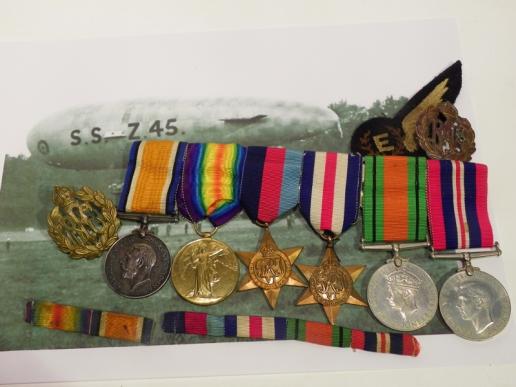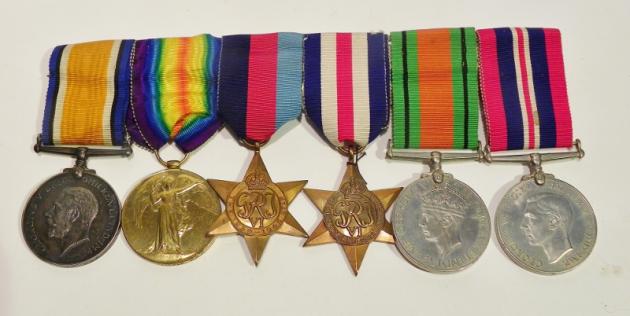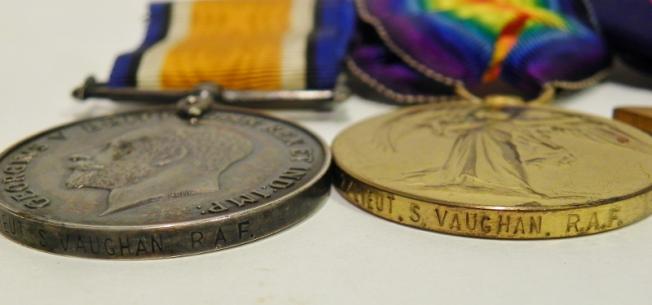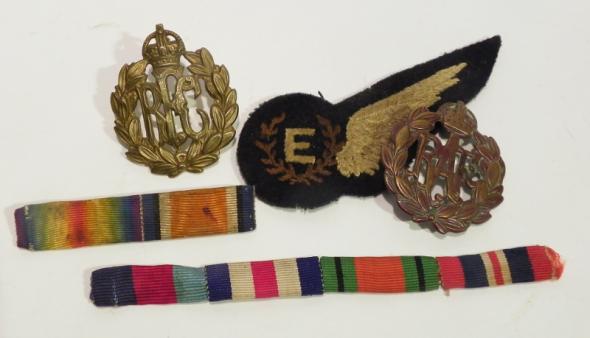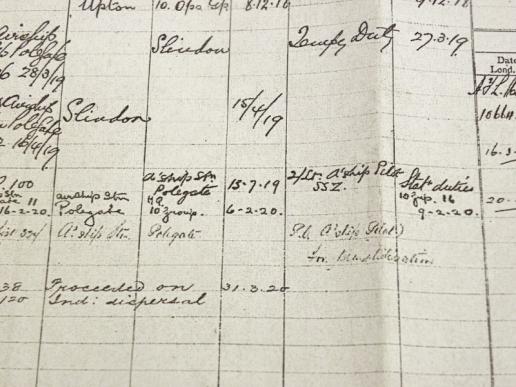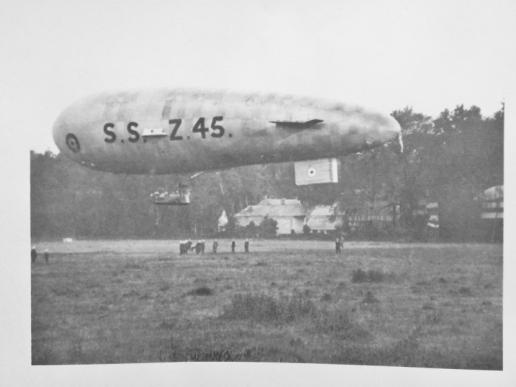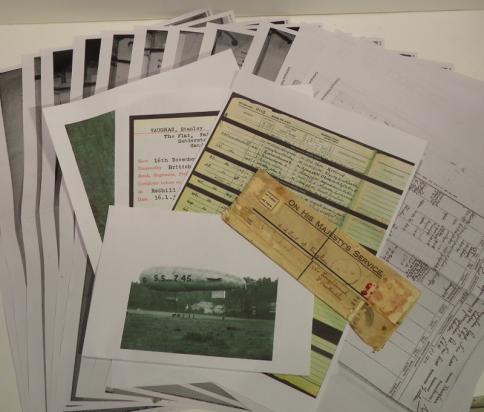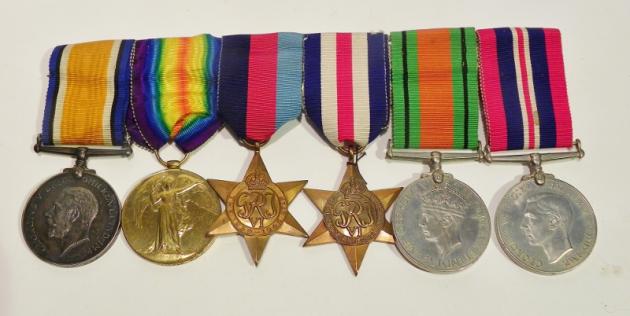Rare WW1-2 Group to 2nd Lieut Vaughan SSZ Airship Pilot.
A superb and rare group comprising of the WW1 British war and victory medal and the 1939/45 star, France & Germany star, defence medal and 1939/45 war medal. The WW1 pair correctly named to 2nd Lieut S. Vaughan RAF.
Stanley Vaughan was born in Peckham, London on 6th November 1899. His father was a Taylor with his own shop. He was educated at the Westminster City School. The school had good army cadet training and in 1914 Stanley enrolled into the Queens Westminster Cadet Corps. His cadet school report said he was a very keen cadet, a good shot and signaller and earned an efficiency badge in his first year. In this report it also recommends him to make an efficient officer.
After he left school he worked at his father shop and part time as a cadet. In January 1916 he enlisted into the RFC as an officer cadet, he must have shown great promise as he was given a commision in the September 1917 as a 2nd Lieutenant in the Royal Flying Corps as a Free Balloon Pilot with the Naval wing at Roehampton. He later went on to fly RN air ships from Upton and pilot observation balloons. The pilots who flew the airships from Upton in Dorset, went out over the English Channel and played a vital role deterring the German U-Boats from attacking British ships. He flew the single engine sea scout zero SSZ airship. They were over 140 feet long, it carried a crew of three, the Pilot, in the nose was the wireless operator who also fired a machine gun and a mechanic sat near the engine. Patrols were exhausting taking 20 hours or more in freezing conditions. Patrols continued quite a while after the armistice because the U-Boats didn’t get the news the war had ended. Stanley flew operations from Upton and Polegate from July 18 to February 20. He was discharged in the march 1920 as no longer required for service.
I don’t know exactly what he was doing between the wars, he may have gone back to work for his father in the tailoring business for a while or he may have continued his passion for flying. In 1939 he is listed on the 1939 register as a flying Instructor and he applied for a new flying licence on 16th January 1939, he is also listed as a mechanical engineer. So some clues are there. Ina 1941 RAF muster roll I have found Stanley as a FE (Flight Engineer), a valuable member of the flight crew with a host of ground and in flight duties maintain and monitoring the aircrafts engines and systems.
I do not know how long he served during the 2nd world war, this needs more research.
This group comes with copies of his WW1 service papers, 1939 census and Flying licence index card. The medal are in excellent original condition and although they are mounted as worn, they look hardly used.
Code: 24157

